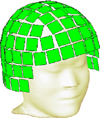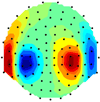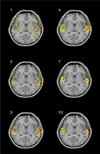Controlled Support MEG imaging
- PMID: 16978882
- PMCID: PMC4057891
- DOI: 10.1016/j.neuroimage.2006.07.023
Controlled Support MEG imaging
Abstract
In this paper, we present a novel approach to imaging sparse and focal neural current sources from MEG (magnetoencephalography) data. Using the framework of Tikhonov regularization theory, we introduce a new stabilizer that uses the concept of controlled support to incorporate a priori assumptions about the area occupied by focal sources. The paper discusses the underlying Tikhonov theory and its relationship to a Bayesian formulation which in turn allows us to interpret and better understand other related algorithms.
Figures








References
-
- Aliprantis CD, Burkinshaw O. Locally Solid Riesz Spaces. New York and London: Academic Press; 1978.
-
- Baillet S, Garnero L. A Bayesian approach to introducing anatomo-functional priors in the EEG/MEG inverse problem. IEEE Trans. Biomed. Eng. 1997;44(5):374–385. - PubMed
-
- Baillet S, Mosher JC, Leahy RM. Electromagnetic brain mapping. IEEE Signal Processing Magazine. 2001;18(6):14–30.
-
- Bertrand C, Hamada Y, Kado H. MRI prior computation and parallel tempering algorithm: a probabilistic resolution of the MEG/EEG inverse problem. Brain Topogr. 2001a;14(1):57–68. - PubMed
-
- Bertrand C, Ohmi M, Suzuki R, Kado H. A probabilistic solution to the MEG inverse problem via MCMC methods: the reversible jump and parallel tempering algorithms. IEEE Trans. Biomed. Eng. 2001b;48(5):533–542. - PubMed
Publication types
MeSH terms
Grants and funding
LinkOut - more resources
Full Text Sources

